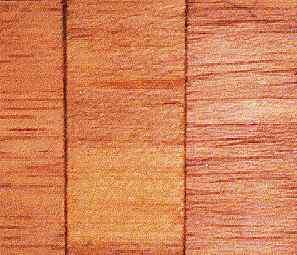
Amberoi (Pterocymbium beccarii)
Family:
Common names: Amberoi
Distributed in: Indonesia, Malaysia, Myanmar, Papua New Guinea, Philippines (Oceania and S.E. Asia)
Distribution overview: The species occurs in the Philippines, Indonesia, Malaysia, Burma, and Papua New Guinea in Southeast Asia.
Common uses: Balusters, Boxes and crates, Building construction, Building materials, Carvings, Casks, Chairs, Chests, Concealed parts (Furniture), Construction, Core Stock, Decorative plywood, Desks, Dining-room furniture, Dowell pins, Dowells, Drawer sides, Excelsior, Fine furniture, Floor lamps, Furniture , Furniture components, Furniture squares or stock, Hatracks, Interior construction, Joinery, Kitchen cabinets, Light construction, Living-room suites, Matchboxes, Matches, Moldings, Office furniture, Packing cases, Plywood, Pulp/Paper products, Pulpwood, Radio - stereo - TV cabinets, Rustic furniture, Stairworks, Stools, Stringers
Environment profile: Status unknown in many of its growth areas
Colors: the heart isRed, White to creamand the sapwoodNot clearly defined from sapwood , Whitish.The grain isStraight, the textureMediumand the lusterDull
Natural durability: Moderately durable, Needs chemical protection in high decay conditions
Odor: No specific smell or taste
Drying Defects: Slight end splitting, Slight twist/warp
Ease of Drying: Reconditioning Treatement
Blunting Effect: Moderate
Boring: Fairly easy to very easy
Carving: Seasoned wood is generally easier to work
Cutting Resistance: Easy to saw
Gluing: Good gluing properties
Mortising: Mortising in dry condition is best
Moulding: Moulds easily with ordinary tools
Movement in Service: Moulds easily with ordinary tools
Nailing: Satisfactory nailing properties
Planing: Planes well, to a good finish
Resistance to Impregnation: Permeable
Response to hand tools: Seasoned wood works best
Routing recessing: Seasoned wood is easier
Sanding: Best with seasoned wood
Turning: Fairly Easy to Very Easy
- Numerical data Metric
- Numerical data English
- Strength properties
- References
 |
 |
 |
 |
| Item |
Green |
Dry |
Metric |
| Specific Gravity |
|
|
|
| Density |
|
368 |
kg/m3 |
| Bending Strength |
355 |
456 |
kg/cm2 |
| Crushing Strength |
14 |
22 |
kg/cm2 |
| Hardness |
|
157 |
kg |
| Impact Strength |
|
|
cm |
| Shearing Strength |
|
42 |
kg/cm2 |
| Stiffness |
75 |
84 |
1000 kg/cm2 |
| Tangential Shrinkage |
|
|
% |
| Radial Shrinkage |
|
|
% |
| Weight |
|
|
kg/m3 |
| Maximum Load |
|
|
cm-kg/cm3 |
| Toughness |
|
|
cm-kg |
| Static Bending |
254 |
355 |
kg/cm2 |
|
 |  |  |  | | Item | Green | Dry | English | | Bending Strength | 5057 | 6488 | psi | | Crushing Strength | 206 | 319. | psi | | Density | | 23 | lbs/ft3 | | Hardness | | 348 | lbs | | Maximum Crushing Strength | 2372 | 4253 | psi | | Shearing Strength | | 598 | psi | | Static Bending | 3626 | 5057 | psi | | Stiffness | 1078 | 1196 | 1000 psi | | Toughness | | 56 | inch-lbs | |
Low resistance to denting and marring
Density = medium
Compression strength (parallel to grain) = low
Bending strength (MOR) = low
Bolza, E., Kloot, N. H. 1966. The Mechanical Properties of 81 New Guinea Timbers. Technological Paper No. 41. Division of Forest Products, Center for Scientific and Industrial Organization (CSIRO, Melbourne, AustraliaEddowes, P.J. 1977. Commercial Timbers of Papua New Guinea - Their Properties and Uses. Forest Products Research Center, Office of Forests, Department of Primary Industry, Papua New Guinea.Keating, W.G., Bolza, E.,1982,Characteristics properties and uses of timbers. South East Asia, Northern,Australia and the Pacific,C.S.I.R.O. Div. Chemical Technology,Inkata Press,1WCMC. 1992. Conservation Status Listing - Trees and Timbers of the World. World Conservation Monitoring Center-Plants Programme, Cambridge, CB3 ODL, United Kingdom.
|








